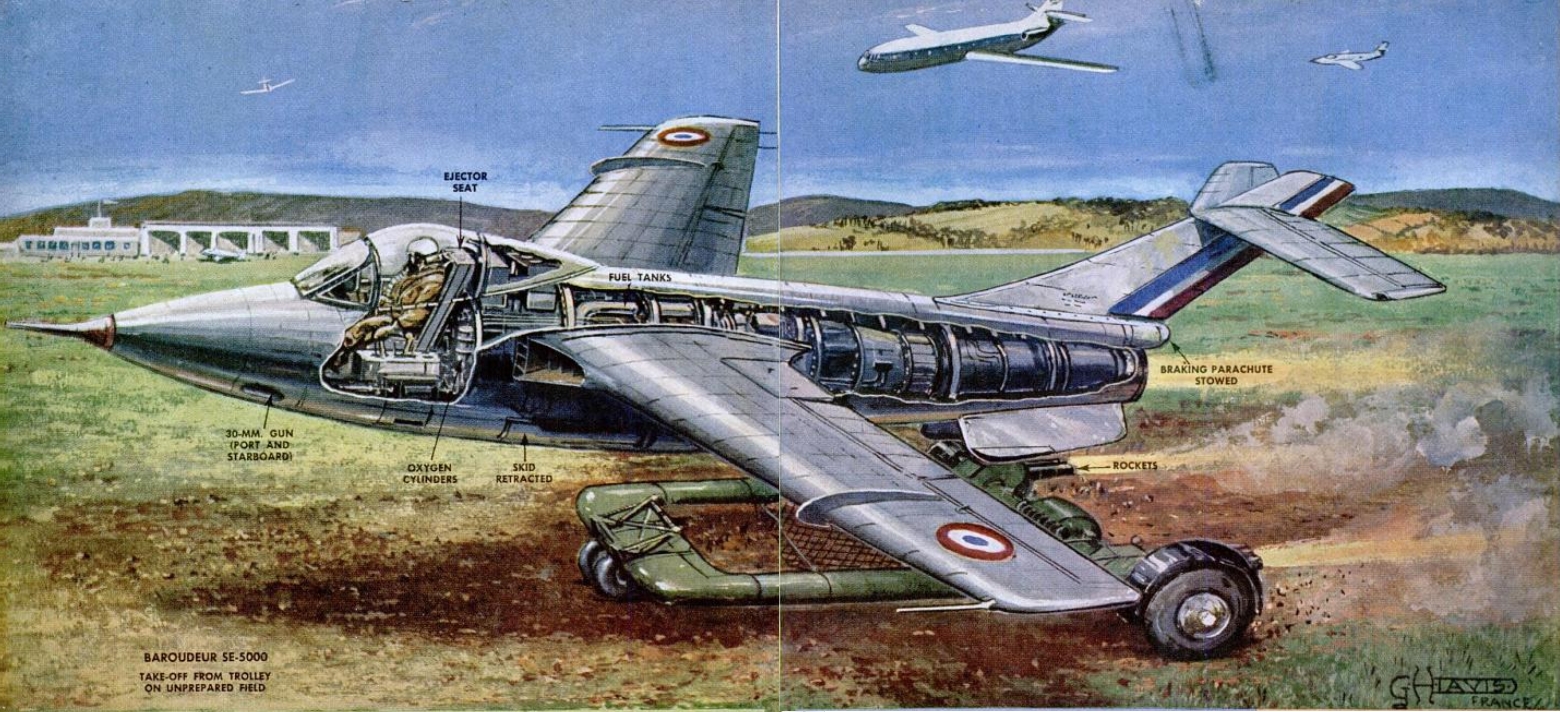A nice G.H. Davis cutaway (note “France” added just above his signature) of a French Baroudeur SE-5000.
See the landing gear on the Baroudeur? No? That’s because the Baroudeur (roughly translated to “adventurer”) is leaving its landing gear behind on the ground. That’s right, the SE-5000 carried no gear, instead relying on a wheeled trolley to assist its takeoff. It landed on grassy fields on skids. This cutaway drawing shows the skids retracted.
Developed for NATO, this lightweight fighter, with a range of 1,500 miles, never entered production.
Enlarge to 1560 x 712 px:
Source: Popular Mechanics May 1956
